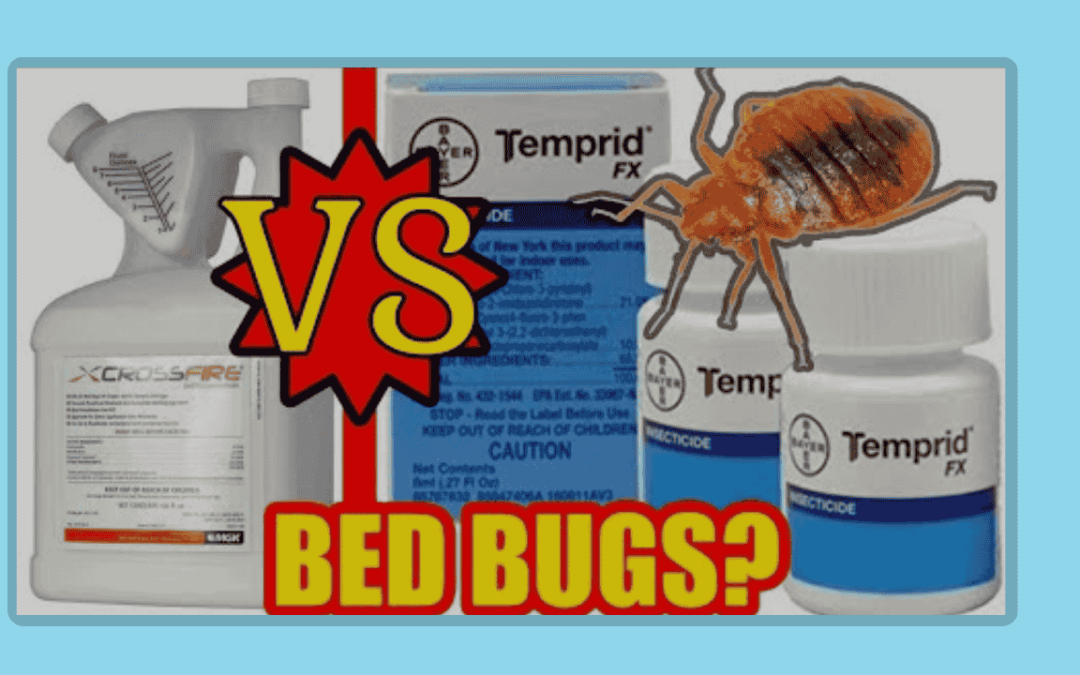Bed bugs are resilient pests that cause stress and discomfort. If you’re battling these intruders, you’ve likely encountered Temprid, a trusted pesticide. But how long does Temprid kill bed bugs after spraying? Knowing the timeframe is vital for effective pest control. This guide dives into Temprid’s efficiency, how it works, and how to maximize its benefits for a bed bug-free home.
What Is Temprid and How Does It Work?
Temprid is a powerful dual-action pesticide. It contains two active ingredients: beta-cyfluthrin and imidacloprid. These chemicals work together to eliminate bed bugs at all life stages.
- Beta-cyfluthrin attacks the nervous system of the pests, causing paralysis and death.
- Imidacloprid disrupts their feeding habits, making survival impossible.
This combination ensures long-lasting residual effects, killing pests for weeks after application.
How Long Does Temprid Kill Bed Bugs After Spraying?
The effectiveness of Temprid is impressive. After application:
- Immediate Impact: Temprid starts killing bed bugs within minutes of contact.
- Residual Action: Its effectiveness lasts up to 90 days on treated surfaces.
However, results depend on proper application, infestation level, and environmental conditions.
Factors That Influence Temprid’s Effectiveness
Understanding these factors helps you maximize results:
- Application Technique: Uneven or inadequate spraying can reduce its impact. Ensure thorough coverage of affected areas.
- Surface Type: Porous surfaces absorb chemicals faster, shortening residual effectiveness.
- Infestation Severity: Heavier infestations may take longer to control.
Step-by-Step Guide: Using Temprid for Bed Bugs
Follow these steps for optimal results:
- Prepare the Area: Declutter rooms and wash fabrics like bed sheets in hot water.
- Mix Temprid Correctly: Combine the recommended dosage with water in a sprayer. Follow the product label for accuracy.
- Target Key Areas: Spray cracks, crevices, mattress seams, and furniture joints where bed bugs hide.
- Allow Proper Drying: Let treated surfaces dry entirely before re-entering the area.
- Monitor Results: Inspect treated areas regularly and reapply if necessary after 90 days.
Comparison of Temprid’s Residual Effectiveness with Other Pesticides
| Pesticide | Residual Effectiveness | Mode of Action | Ease of Use |
|---|---|---|---|
| Temprid | Up to 90 days | Dual-action | Moderate |
| Suspend SC | Up to 90 days | Single active ingredient | Easy |
| CrossFire | Up to 30 days | Dual-action | Moderate |
| EcoRaider | Immediate effect only | Plant-based active ingredients | Easy |
Temprid stands out for its long-lasting residual action, making it a reliable choice for bed bug control.
Benefits of Using Temprid for Bed Bug Control
- Long-Lasting Results: Up to three months of protection.
- Kills All Stages: From eggs to adults, ensuring no resurgence.
- Effective on Multiple Surfaces: Works on mattresses, carpets, and furniture.
- Cost-Effective Solution: Reduces the need for repeated treatments.
Safety Tips for Using Temprid
While Temprid is highly effective, safety is crucial:
- Wear gloves, a mask, and long sleeves during application.
- Keep children and pets away from treated areas until completely dry.
- Follow the product label for mixing and application instructions.
Signs That Temprid Is Working
You’ll notice the following signs within days of application:
- Reduced sightings of live bed bugs.
- Dead bed bugs near treated areas.
- Fewer bites or irritation.
When Should You Reapply Temprid?
For severe infestations, consider reapplying after 30 days. For maintenance, reapply every 90 days to prevent re-infestation. Always inspect treated areas to determine if additional applications are needed.
Does Temprid Work on Other Pests?
Yes, Temprid is versatile. It also kills ants, spiders, cockroaches, and fleas, making it a valuable tool for overall pest control.
Additional Resources on Bed Bug Control
Explore more tips and tricks on pest control through these helpful guides:
Common Myths About Bed Bug Treatments
- Myth: Bed bugs only infest dirty homes.
- Fact: Bed bugs don’t discriminate; they thrive anywhere with hosts.
- Myth: DIY sprays work just as well as professional products.
- Fact: Professional-grade pesticides like Temprid are far more effective.
Comparison of Temprid to DIY Bed Bug Remedies
| Solution | Effectiveness | Ease of Use | Cost |
|---|---|---|---|
| Temprid | High | Moderate | Affordable |
| Diatomaceous Earth | Moderate | Easy | Very Affordable |
| Heat Treatment | High | Professional help | Expensive |
Conclusion
Temprid is a proven solution for effectively and efficiently controlling bed bugs. Its dual-action formula and long-lasting residual effect eliminate infestations and prevent recurrence. By following the correct application techniques and maintaining safety precautions, you can enjoy a pest-free home in no time.

